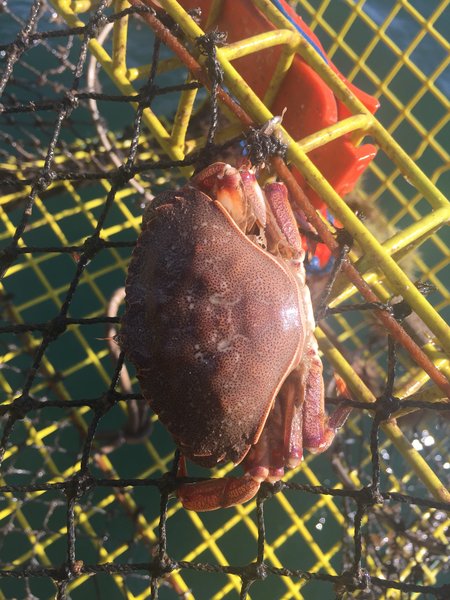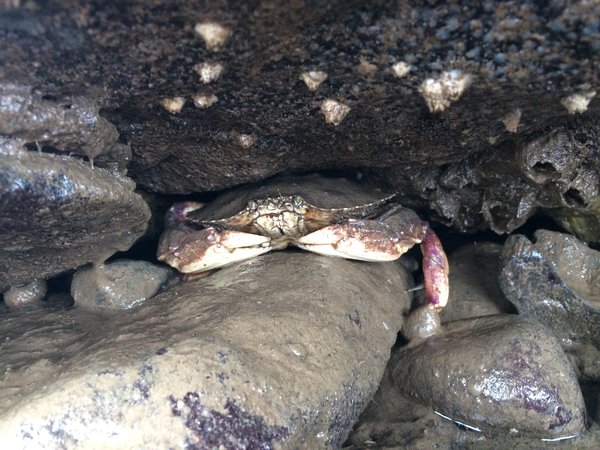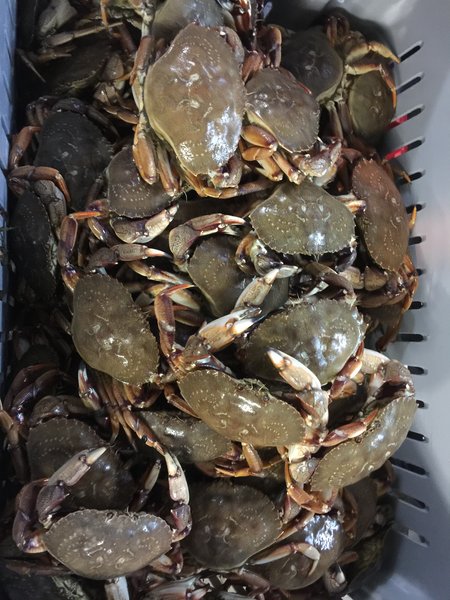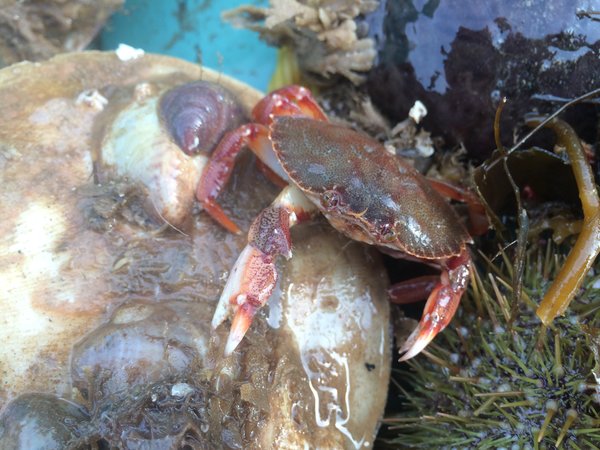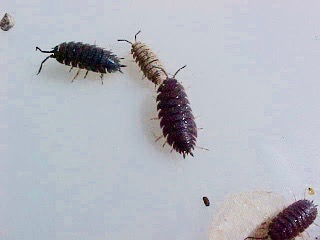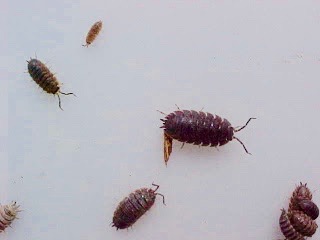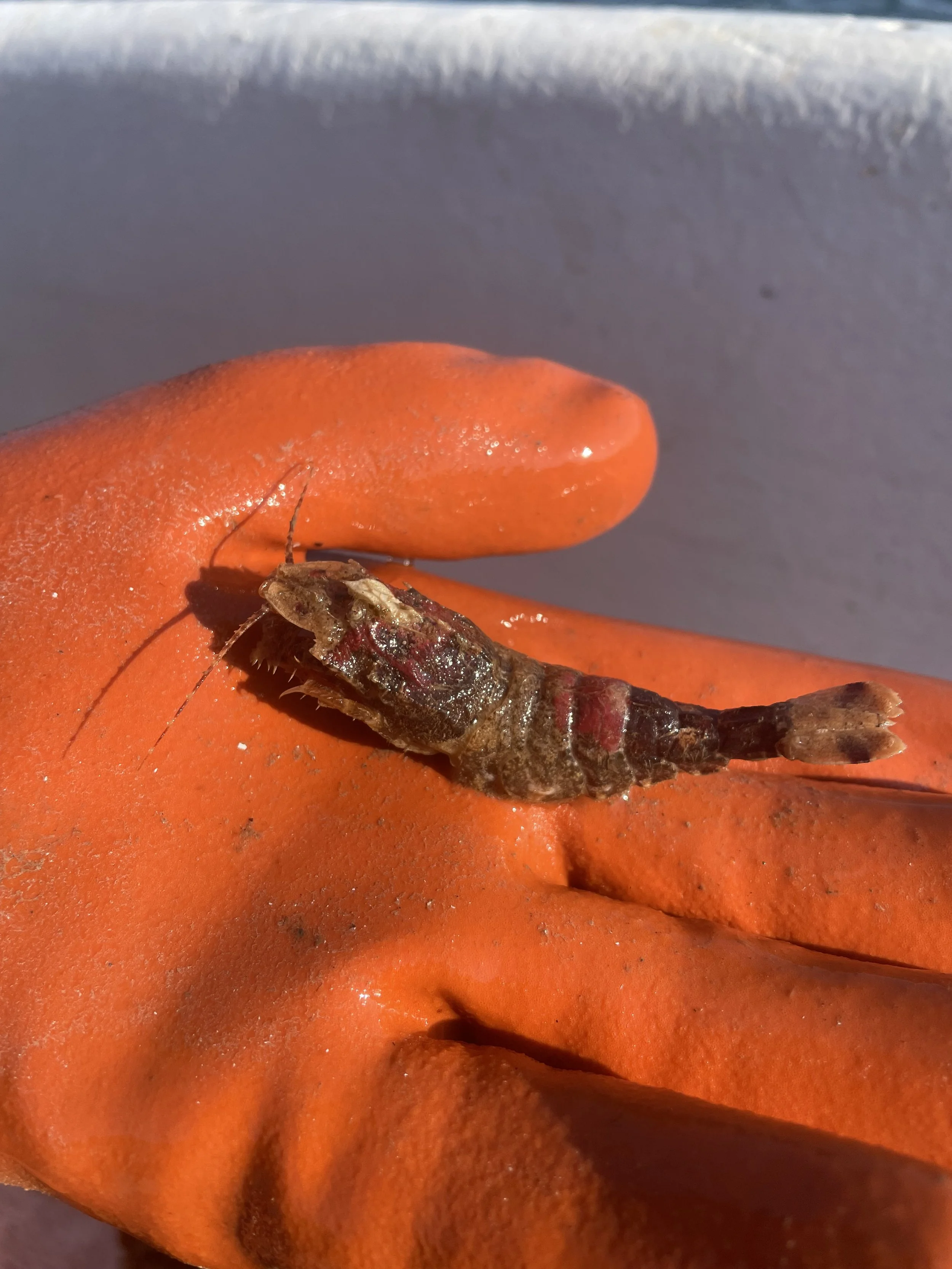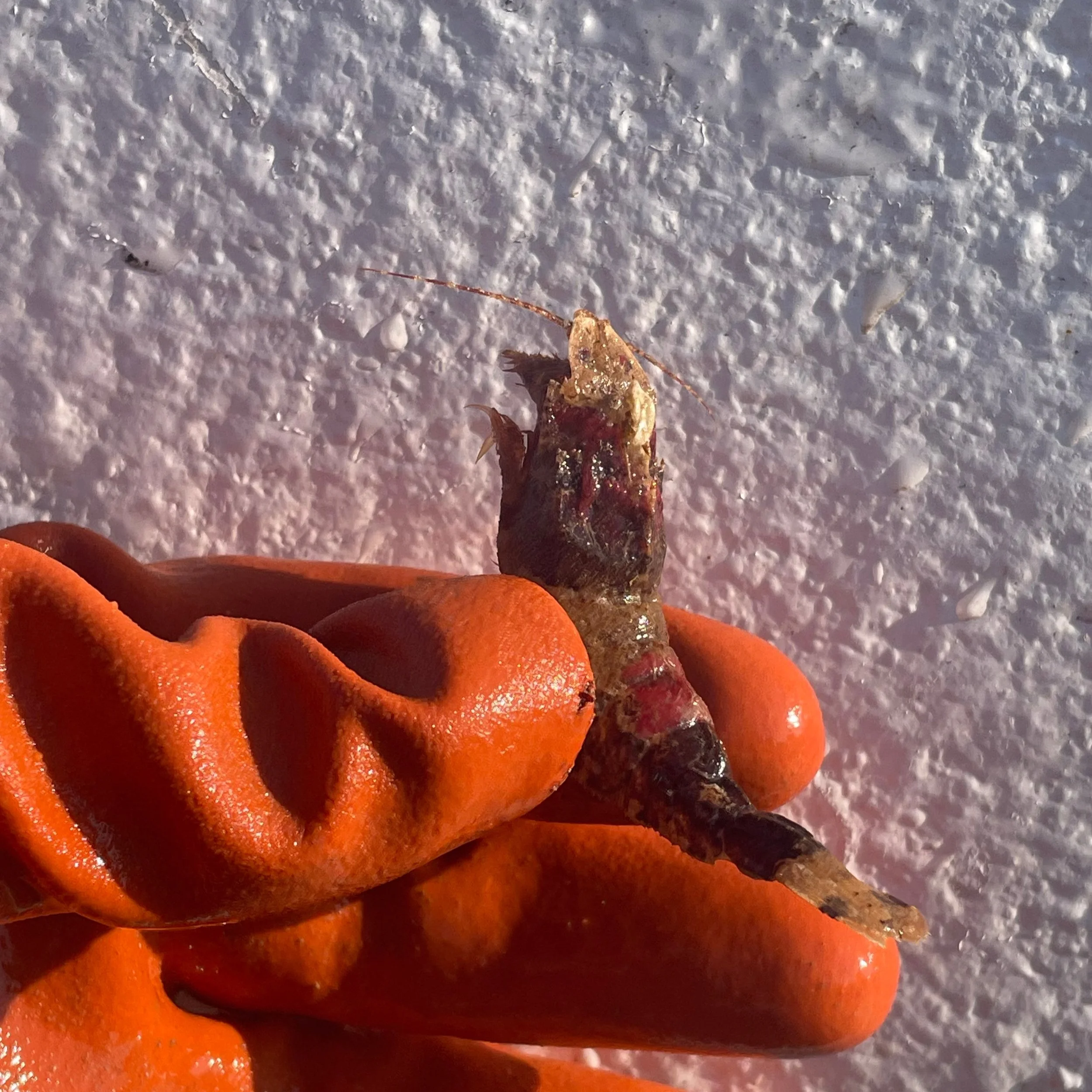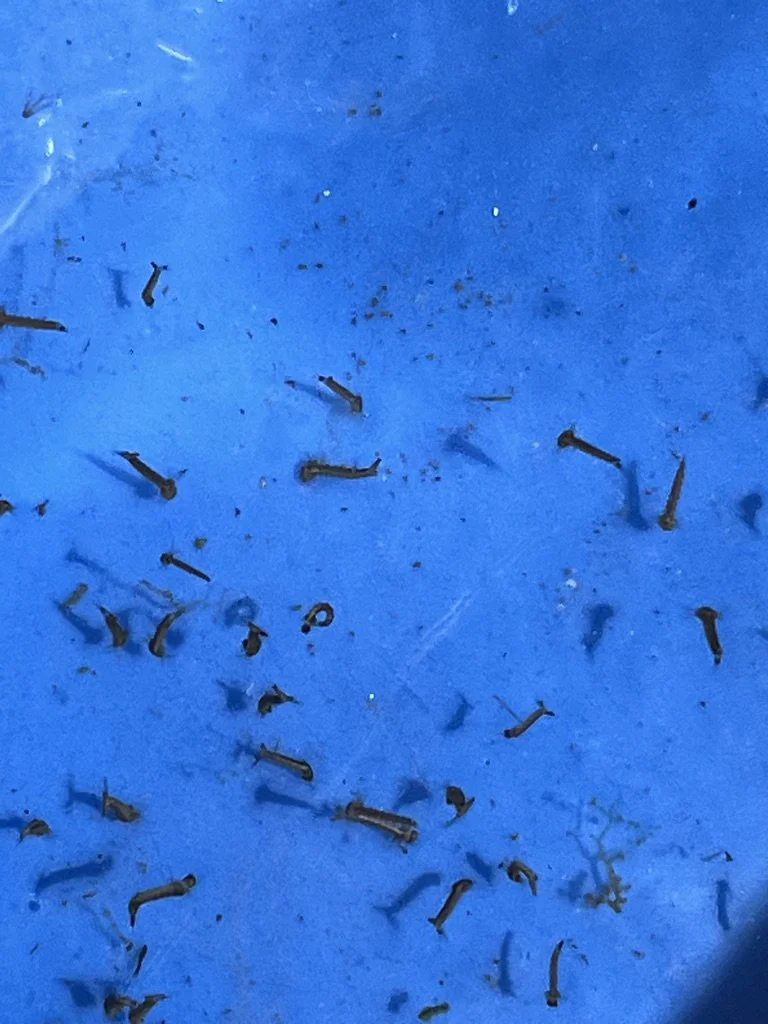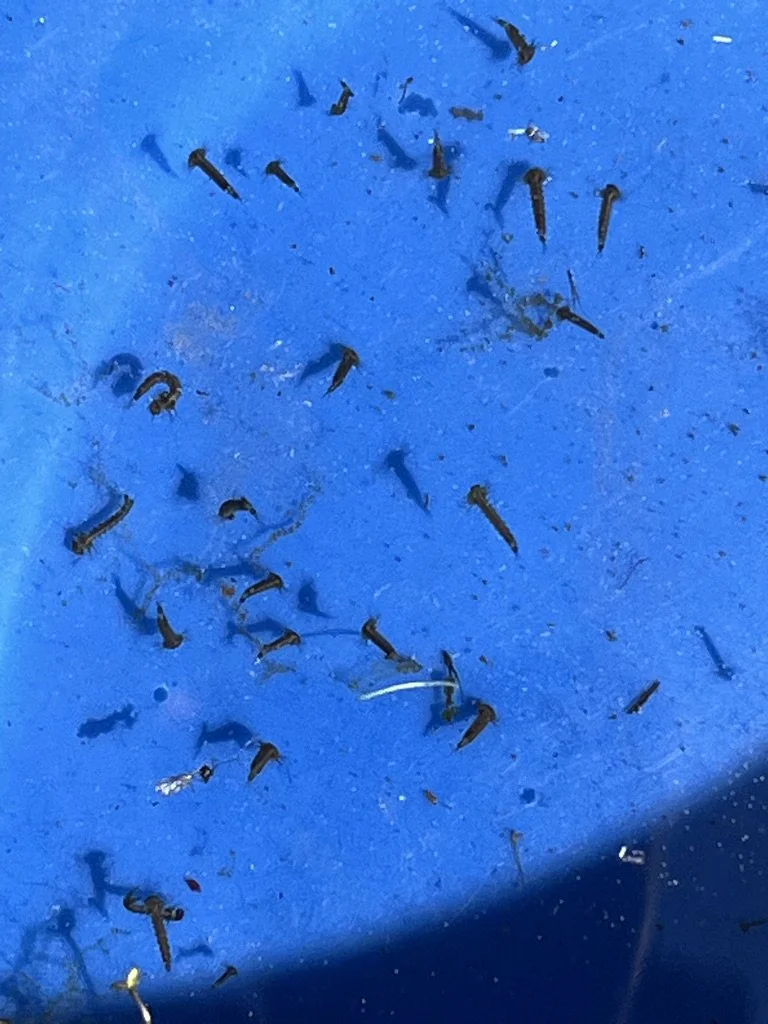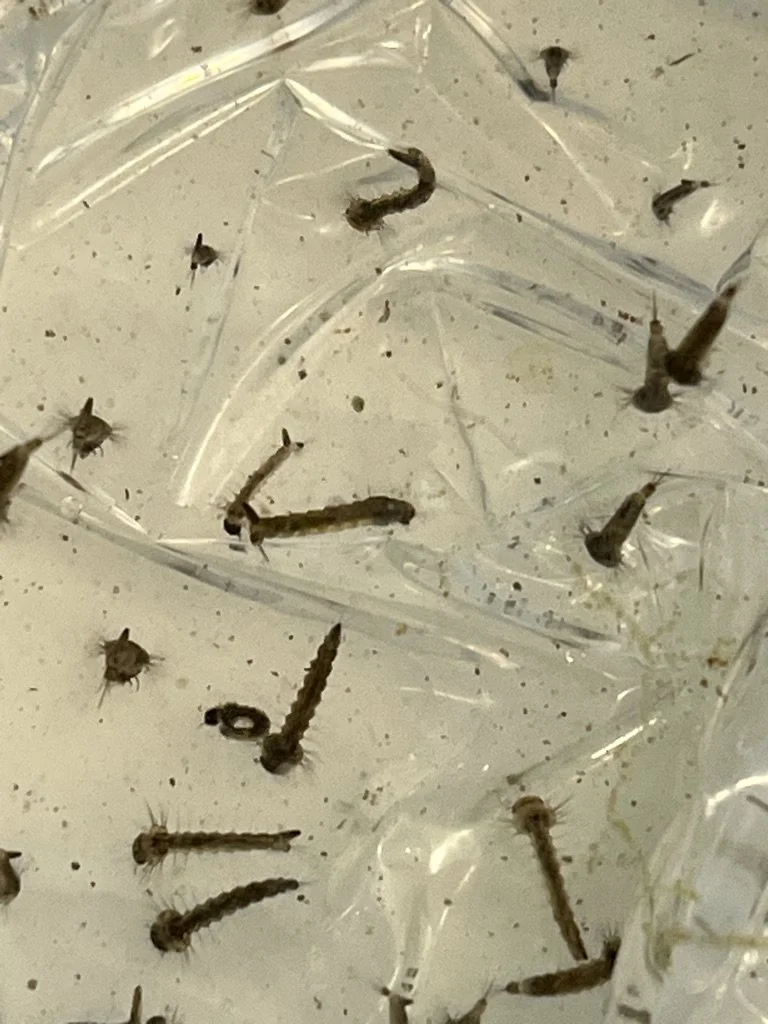 Image 1 of 3
Image 1 of 3

 Image 2 of 3
Image 2 of 3

 Image 3 of 3
Image 3 of 3




Rock Barnacle (Balanus balanoides)
Live Rock Barnacle (Balanus balanoides)
This is a wet, live, science specimen
The Rock Barnacle (Balanus balanoides) is one of the most common and resilient inter-tidal crustaceans found along the Gulf of Maine. These small but fascinating filter feeders attach firmly (“glue” themselves) to hard surfaces such as rocks, pilings, floats, and even other marine animals. Using their feathery cirri, barnacles sweep plankton and detritus from the water, showcasing remarkable adaptations for survival in the harsh, wave-battered inter-tidal zone.
Collected by hand from coastal habitats, these live barnacles are excellent specimens for marine ecology studies, aquarium observation, and classroom demonstrations on crustacean biology and adhesion mechanisms.
Common name: Rock barnacle
Scientific name: Balanus balanoides
Locations: Attached to pilings, floats, rocks, boats, and inter-tidal organisms
Seasonality: Available all year
Color: Off-white
Size: ½” – ¾”
Collected: By hand
Quantity: Sold by the each
Uses: Ideal for aquariums, marine ecology labs, invertebrate anatomy lessons, and adhesion biology research.
Note: This is a live marine specimen. Natural variations in size, color, and appearance from photos should be expected. If you would like any specimen preserved, please send a request to: info@gulfofme.com.
Live Rock Barnacle (Balanus balanoides)
This is a wet, live, science specimen
The Rock Barnacle (Balanus balanoides) is one of the most common and resilient inter-tidal crustaceans found along the Gulf of Maine. These small but fascinating filter feeders attach firmly (“glue” themselves) to hard surfaces such as rocks, pilings, floats, and even other marine animals. Using their feathery cirri, barnacles sweep plankton and detritus from the water, showcasing remarkable adaptations for survival in the harsh, wave-battered inter-tidal zone.
Collected by hand from coastal habitats, these live barnacles are excellent specimens for marine ecology studies, aquarium observation, and classroom demonstrations on crustacean biology and adhesion mechanisms.
Common name: Rock barnacle
Scientific name: Balanus balanoides
Locations: Attached to pilings, floats, rocks, boats, and inter-tidal organisms
Seasonality: Available all year
Color: Off-white
Size: ½” – ¾”
Collected: By hand
Quantity: Sold by the each
Uses: Ideal for aquariums, marine ecology labs, invertebrate anatomy lessons, and adhesion biology research.
Note: This is a live marine specimen. Natural variations in size, color, and appearance from photos should be expected. If you would like any specimen preserved, please send a request to: info@gulfofme.com.
Rock barnacles cling to rocks and make a living filtering food from the cold Atlantic Ocean waters. Join Tidepool Tim as he inspects their life strategies on a local beach. See how barnacles live and keep from getting crowded out or eaten by predators.

Rock barnacles on a blue mussel, all on shale substrate.
Tidepool Tim says, “Barnacles produce their own super-cement, and never move a day in their lives! They’re very stubborn crustaceans. They even molt! They close their shells at low tide, then open their mouths to feed when submerged in water. Feather-like feedings legs come out of their mouths and collect phytoplankton from the surrounding water. The legs also act as gills and gather dissolved oxygen. Take a close look at a barnacle underwater, then move your hand near it and watch the feeding legs retract. Barnacles don’t have eyes, but they can sense the change in light exposure using photoreceptor cells.”

